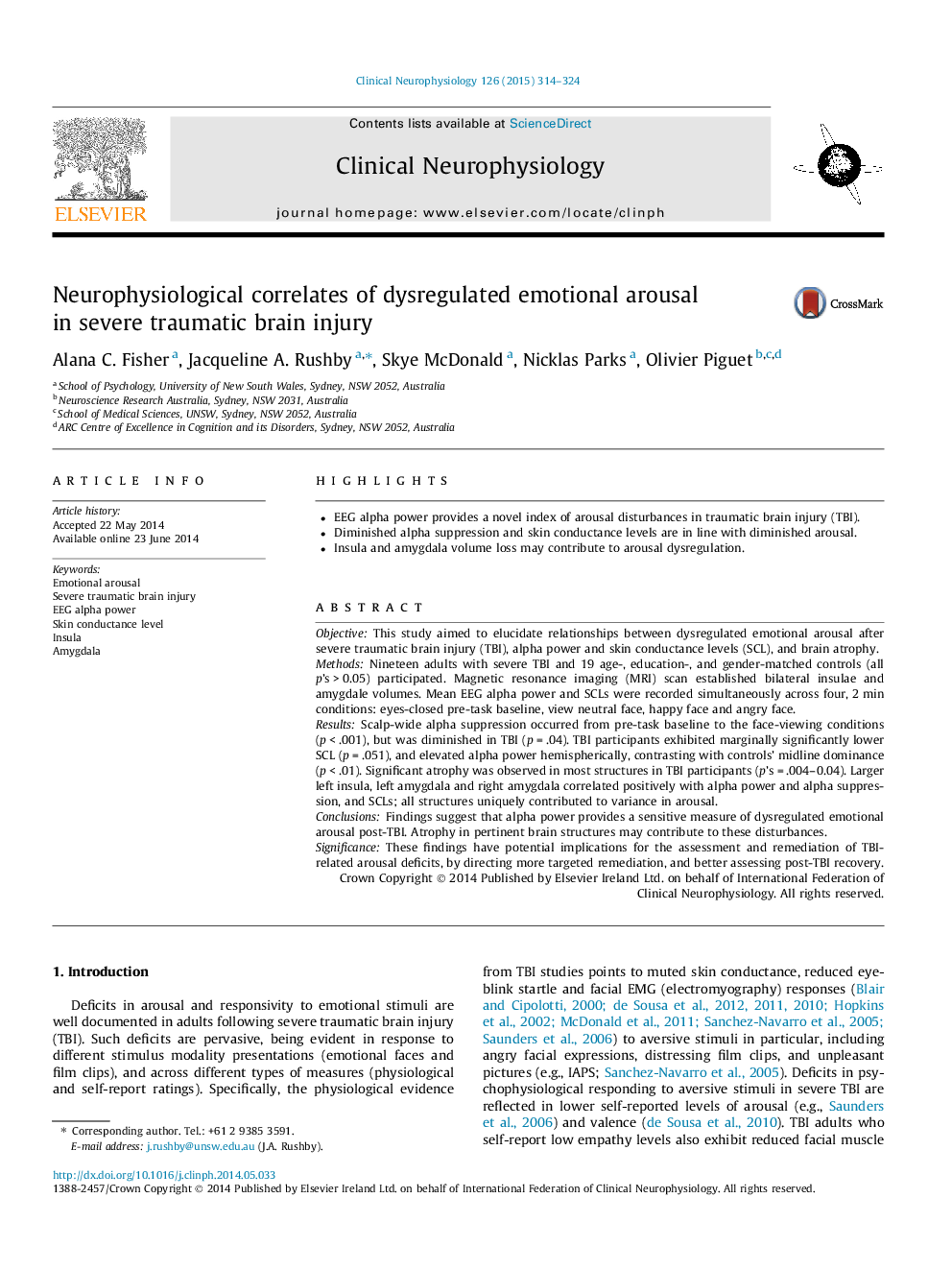| Article ID | Journal | Published Year | Pages | File Type |
|---|---|---|---|---|
| 3043074 | Clinical Neurophysiology | 2015 | 11 Pages |
•EEG alpha power provides a novel index of arousal disturbances in traumatic brain injury (TBI).•Diminished alpha suppression and skin conductance levels are in line with diminished arousal.•Insula and amygdala volume loss may contribute to arousal dysregulation.
ObjectiveThis study aimed to elucidate relationships between dysregulated emotional arousal after severe traumatic brain injury (TBI), alpha power and skin conductance levels (SCL), and brain atrophy.MethodsNineteen adults with severe TBI and 19 age-, education-, and gender-matched controls (all p’s > 0.05) participated. Magnetic resonance imaging (MRI) scan established bilateral insulae and amygdale volumes. Mean EEG alpha power and SCLs were recorded simultaneously across four, 2 min conditions: eyes-closed pre-task baseline, view neutral face, happy face and angry face.ResultsScalp-wide alpha suppression occurred from pre-task baseline to the face-viewing conditions (p < .001), but was diminished in TBI (p = .04). TBI participants exhibited marginally significantly lower SCL (p = .051), and elevated alpha power hemispherically, contrasting with controls’ midline dominance (p < .01). Significant atrophy was observed in most structures in TBI participants (p’s = .004–0.04). Larger left insula, left amygdala and right amygdala correlated positively with alpha power and alpha suppression, and SCLs; all structures uniquely contributed to variance in arousal.ConclusionsFindings suggest that alpha power provides a sensitive measure of dysregulated emotional arousal post-TBI. Atrophy in pertinent brain structures may contribute to these disturbances.SignificanceThese findings have potential implications for the assessment and remediation of TBI-related arousal deficits, by directing more targeted remediation, and better assessing post-TBI recovery.
